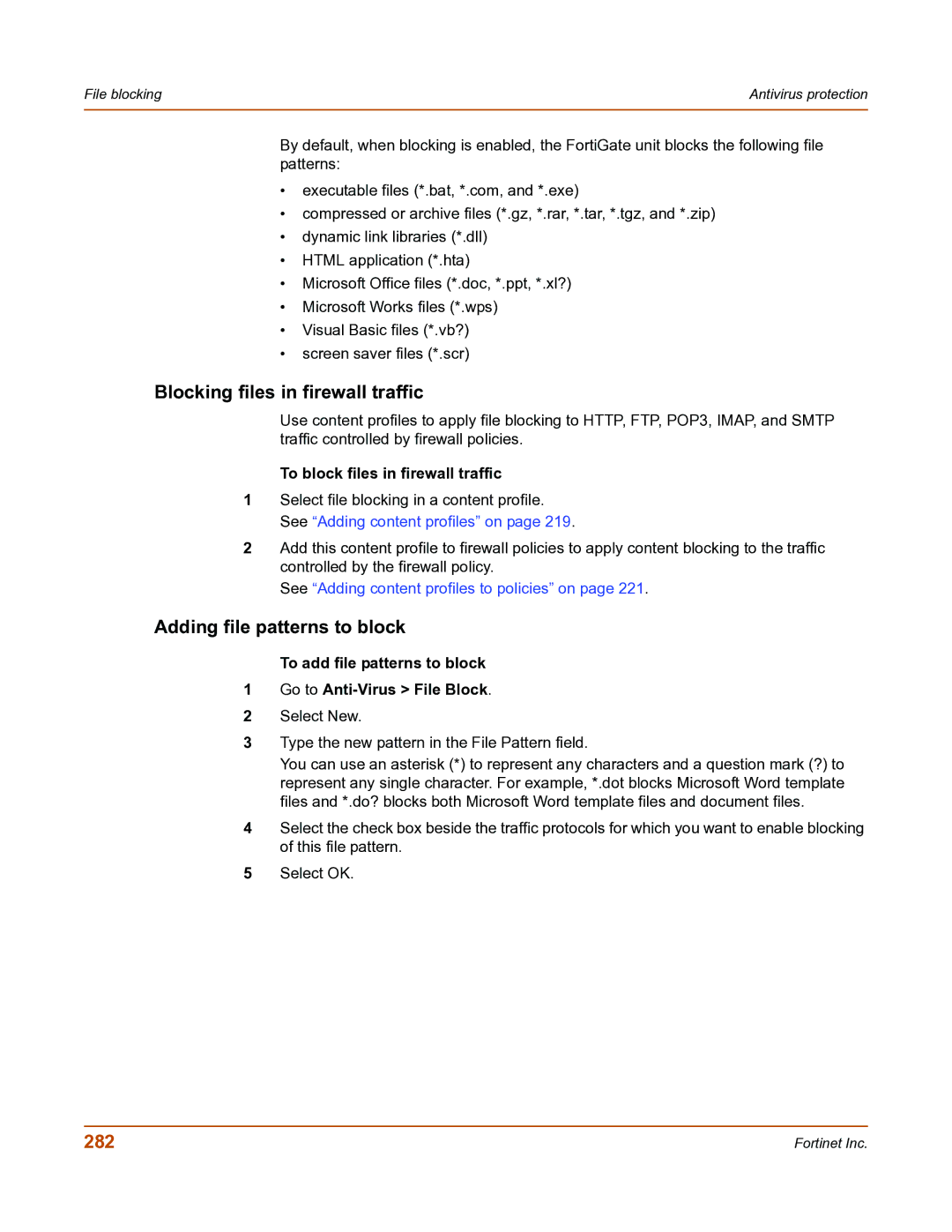File blocking | Antivirus protection |
|
|
By default, when blocking is enabled, the FortiGate unit blocks the following file patterns:
•executable files (*.bat, *.com, and *.exe)
•compressed or archive files (*.gz, *.rar, *.tar, *.tgz, and *.zip)
•dynamic link libraries (*.dll)
•HTML application (*.hta)
•Microsoft Office files (*.doc, *.ppt, *.xl?)
•Microsoft Works files (*.wps)
•Visual Basic files (*.vb?)
•screen saver files (*.scr)
Blocking files in firewall traffic
Use content profiles to apply file blocking to HTTP, FTP, POP3, IMAP, and SMTP traffic controlled by firewall policies.
To block files in firewall traffic
1Select file blocking in a content profile. See “Adding content profiles” on page 219.
2Add this content profile to firewall policies to apply content blocking to the traffic controlled by the firewall policy.
See “Adding content profiles to policies” on page 221.
Adding file patterns to block
To add file patterns to block
1Go to Anti-Virus > File Block.
2Select New.
3Type the new pattern in the File Pattern field.
You can use an asterisk (*) to represent any characters and a question mark (?) to represent any single character. For example, *.dot blocks Microsoft Word template files and *.do? blocks both Microsoft Word template files and document files.
4Select the check box beside the traffic protocols for which you want to enable blocking of this file pattern.
5Select OK.
282 | Fortinet Inc. |
